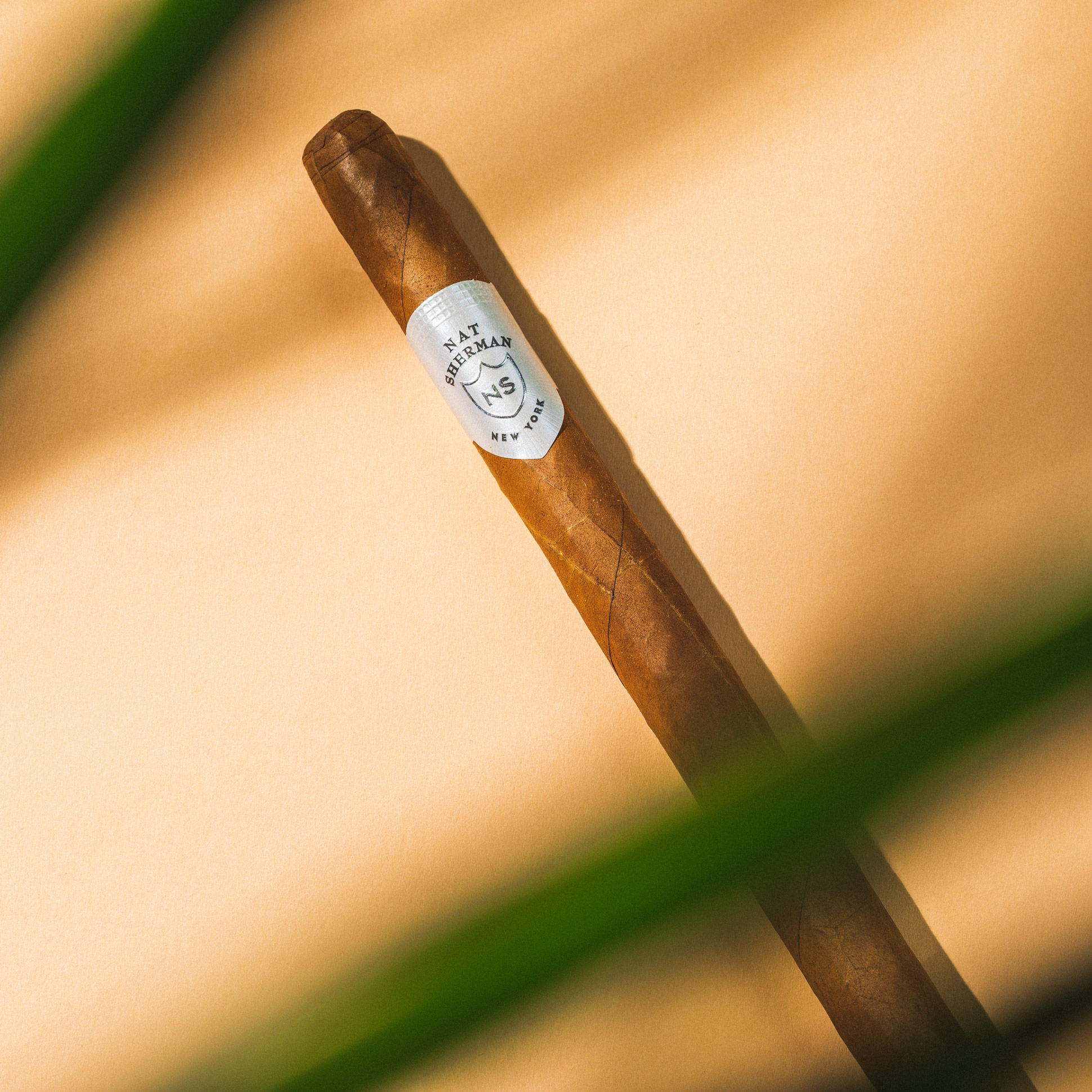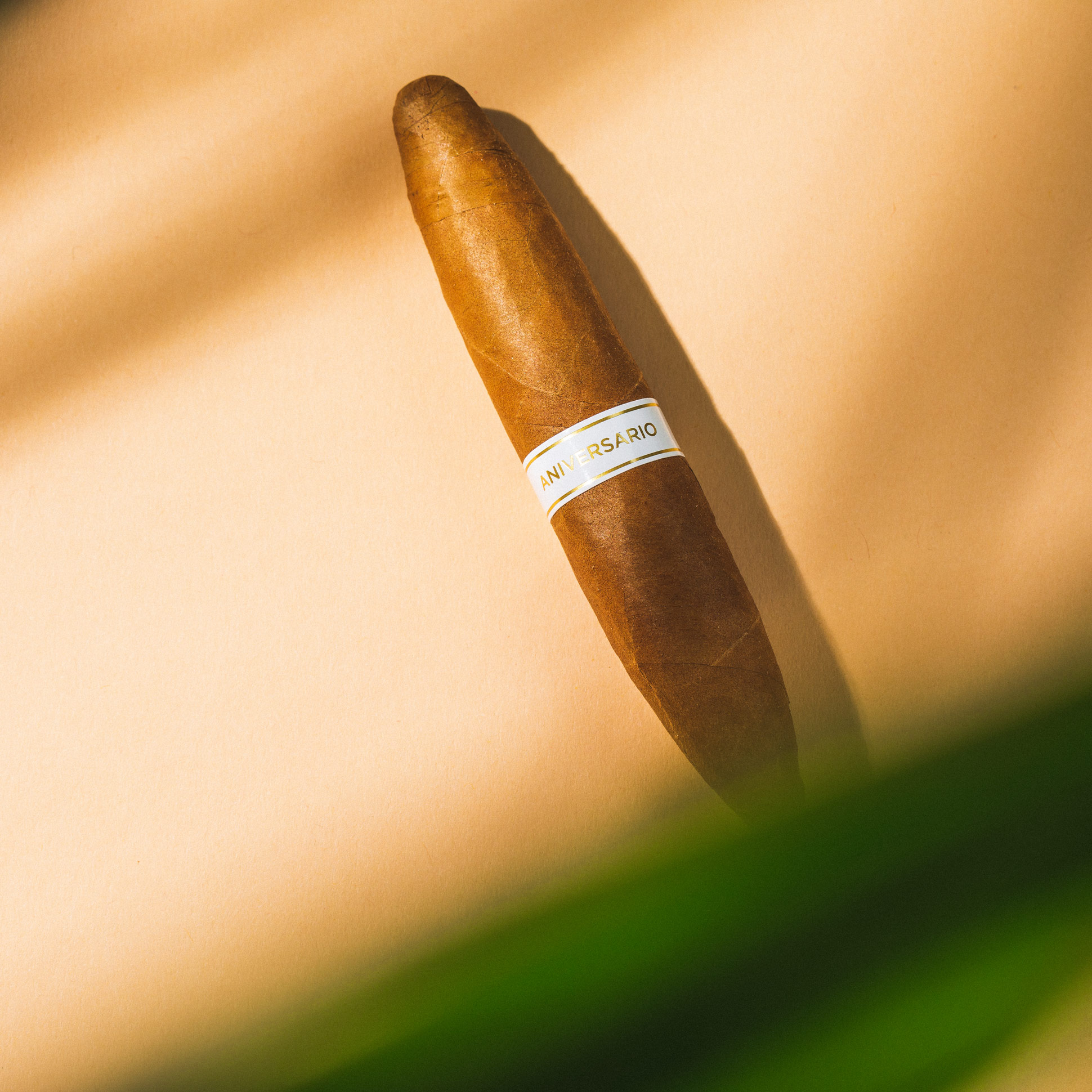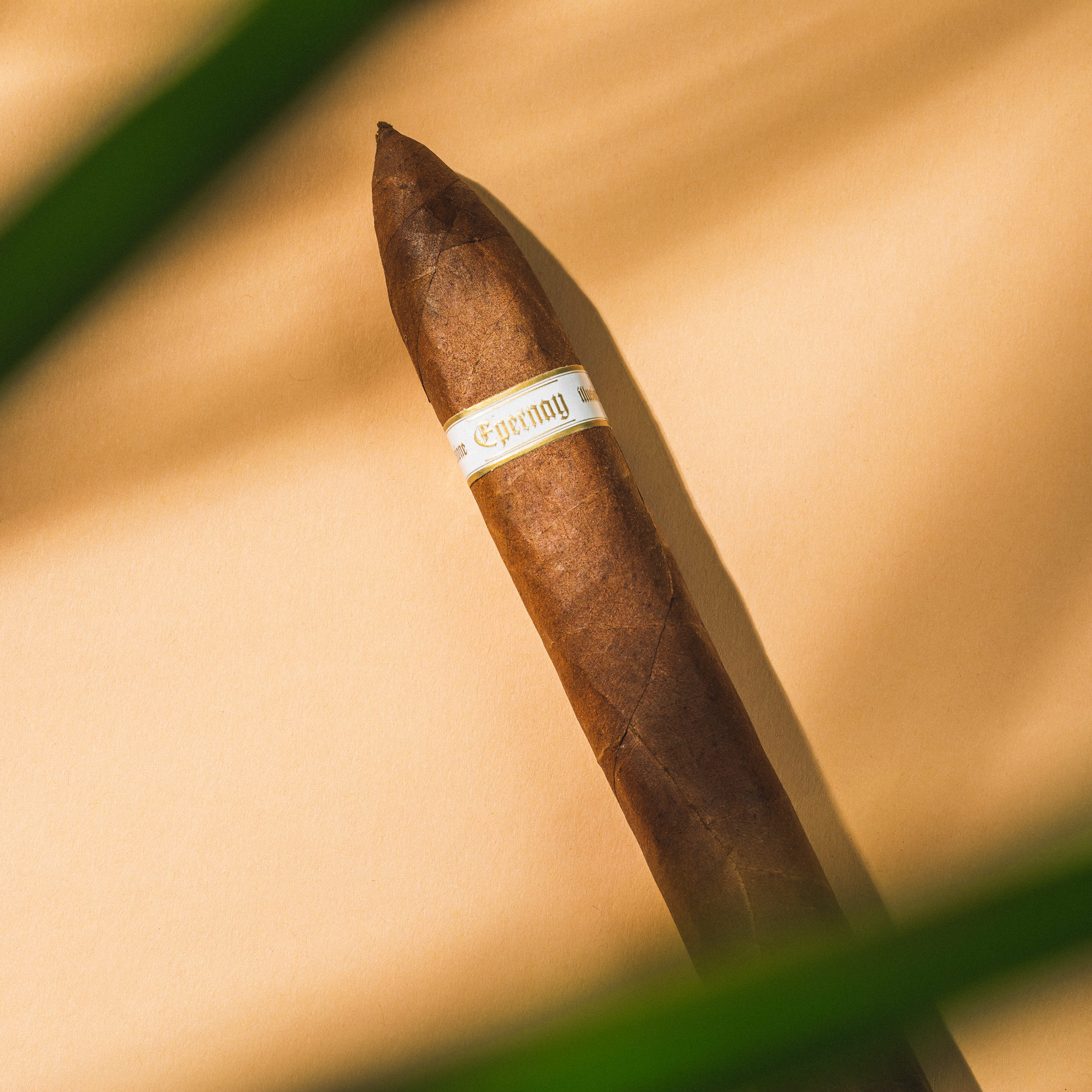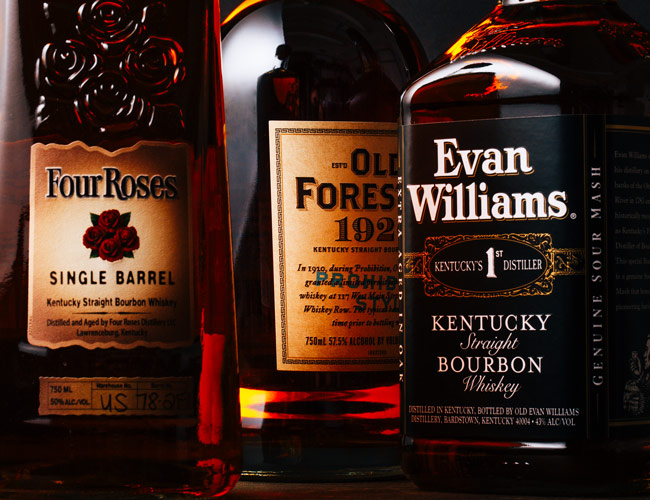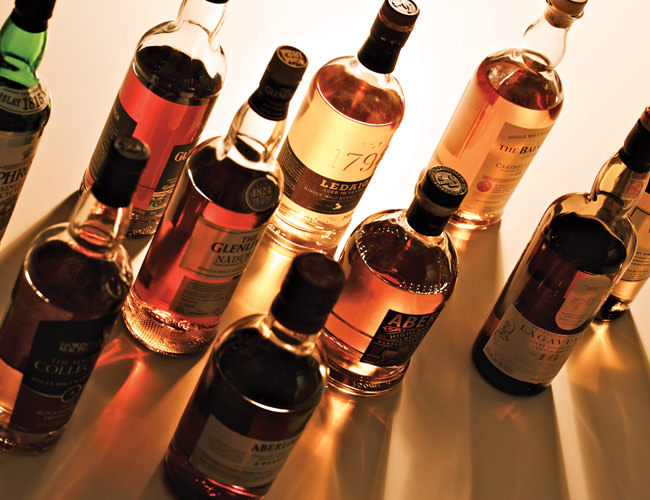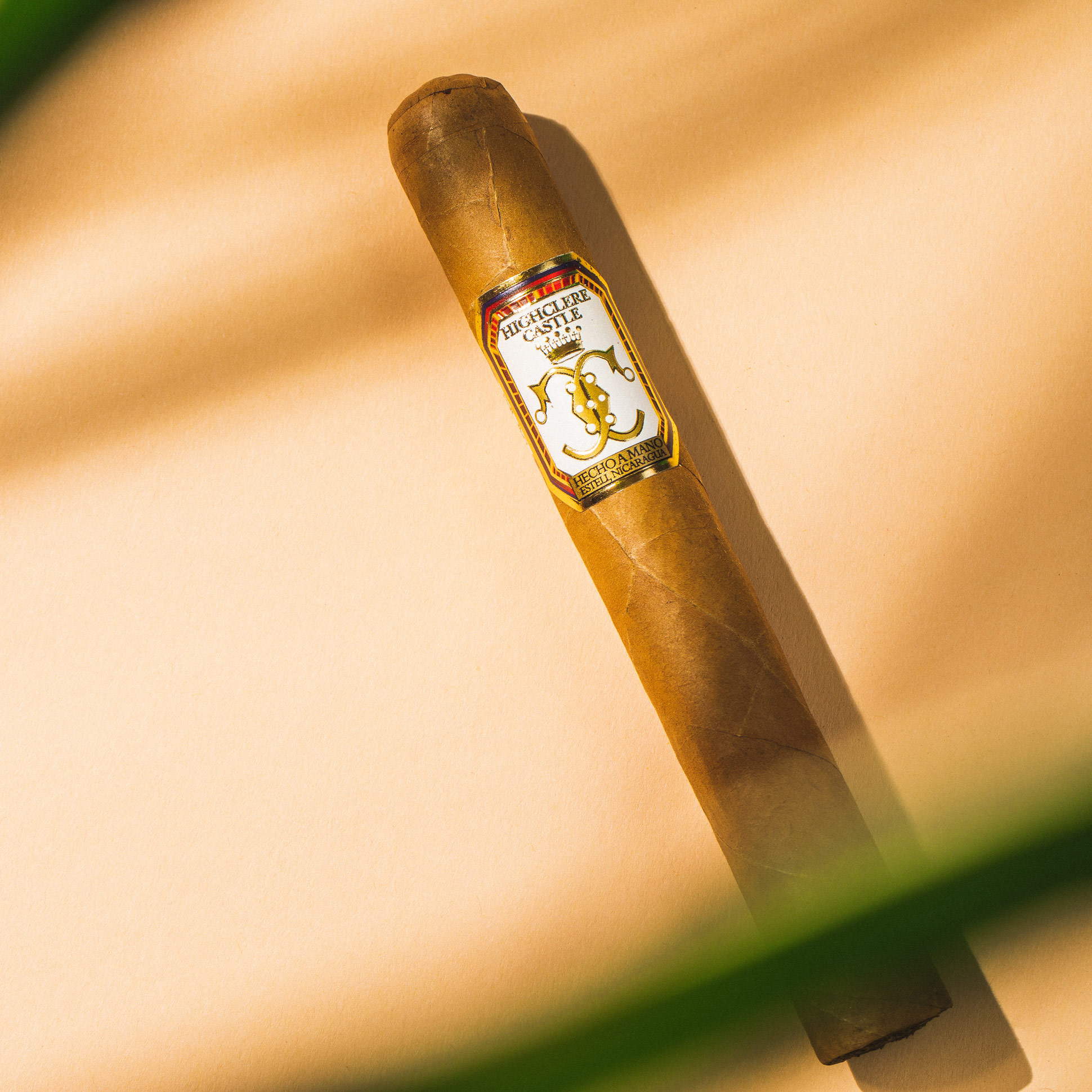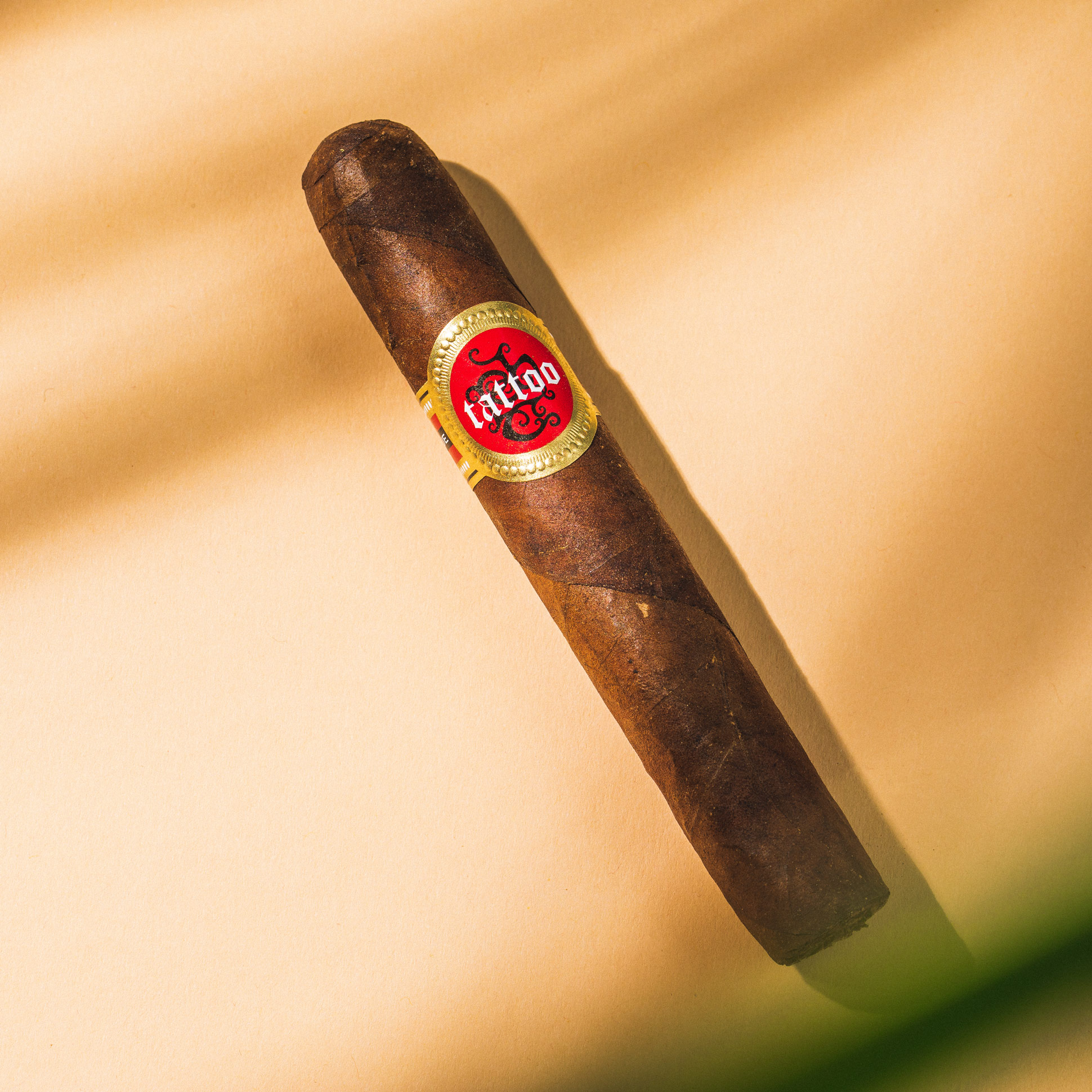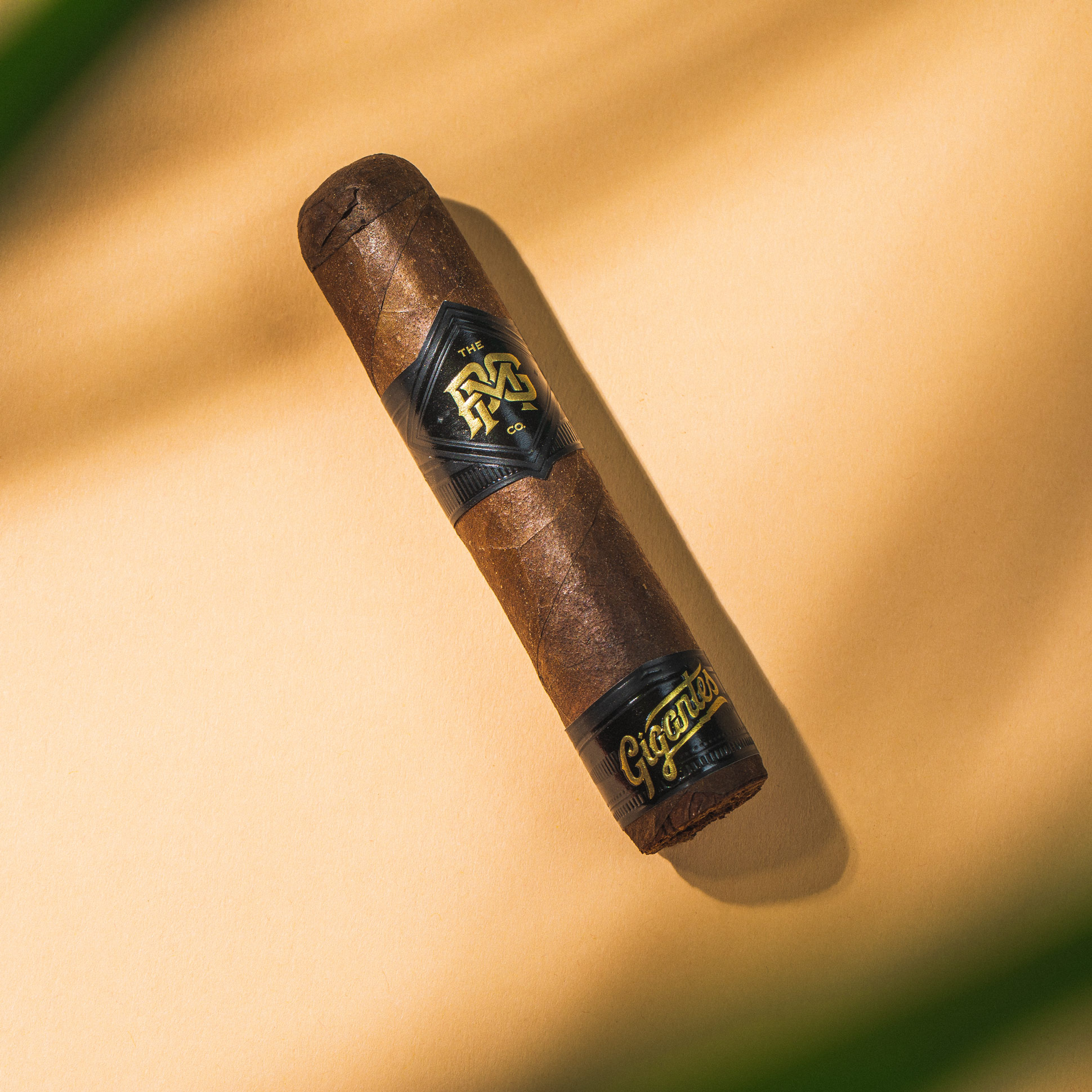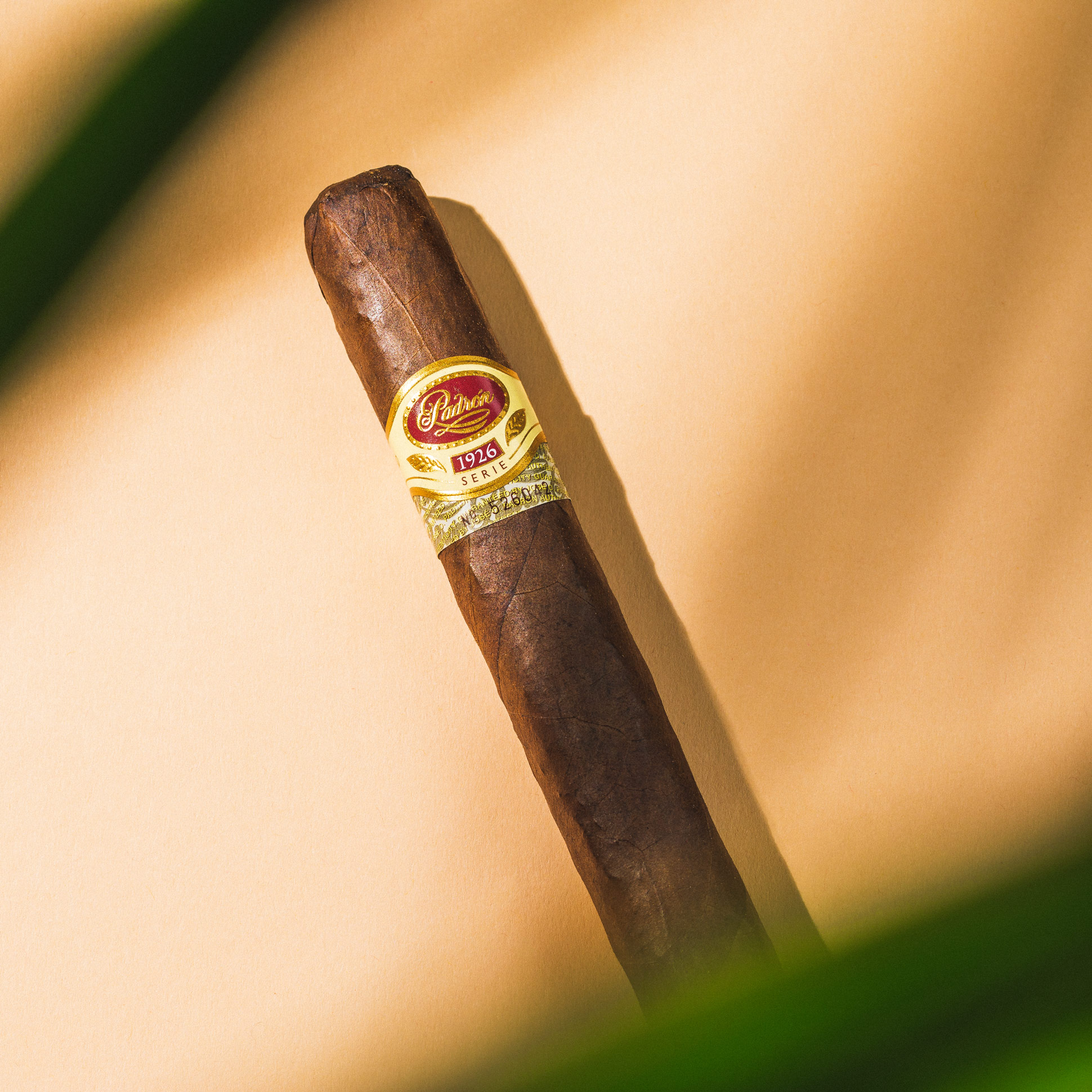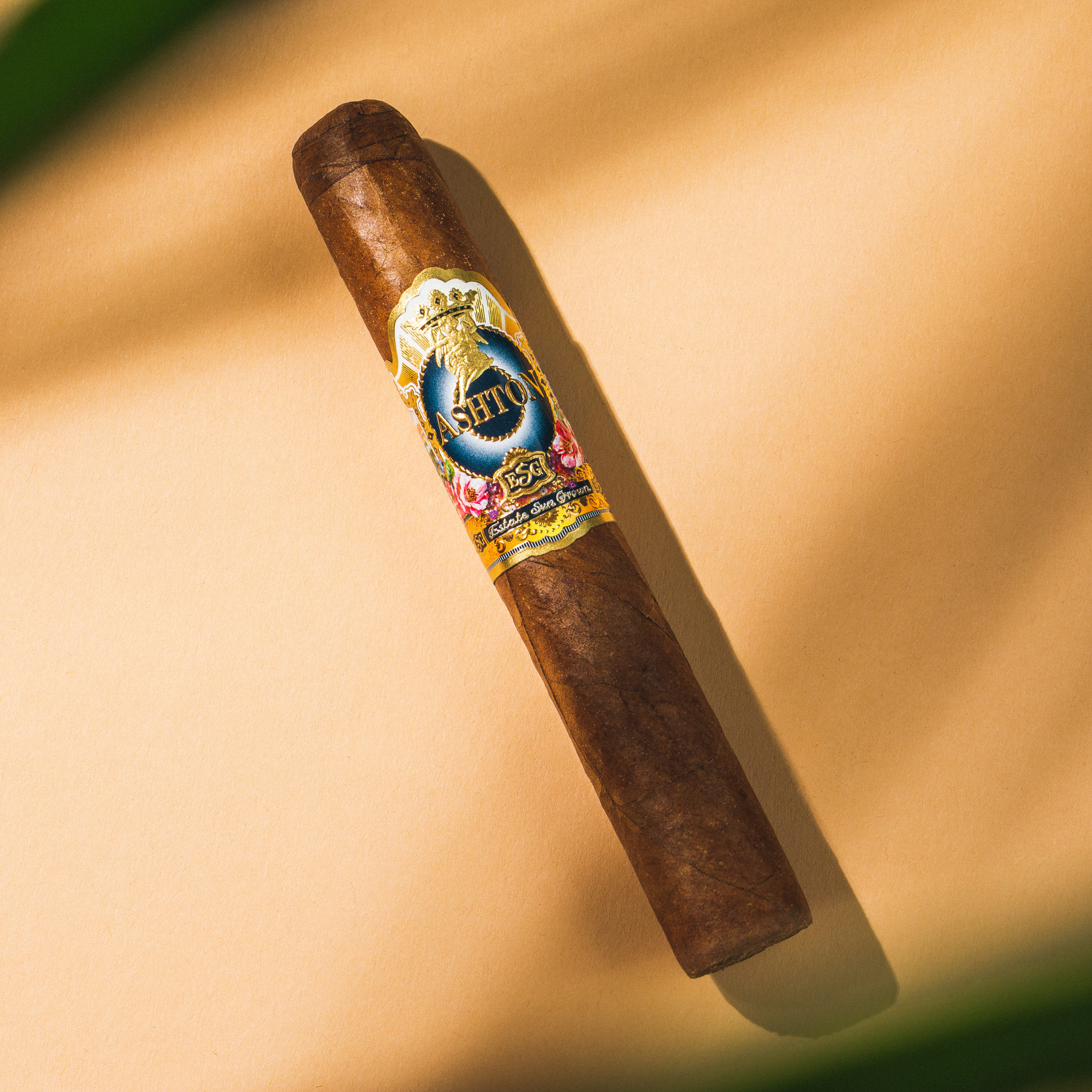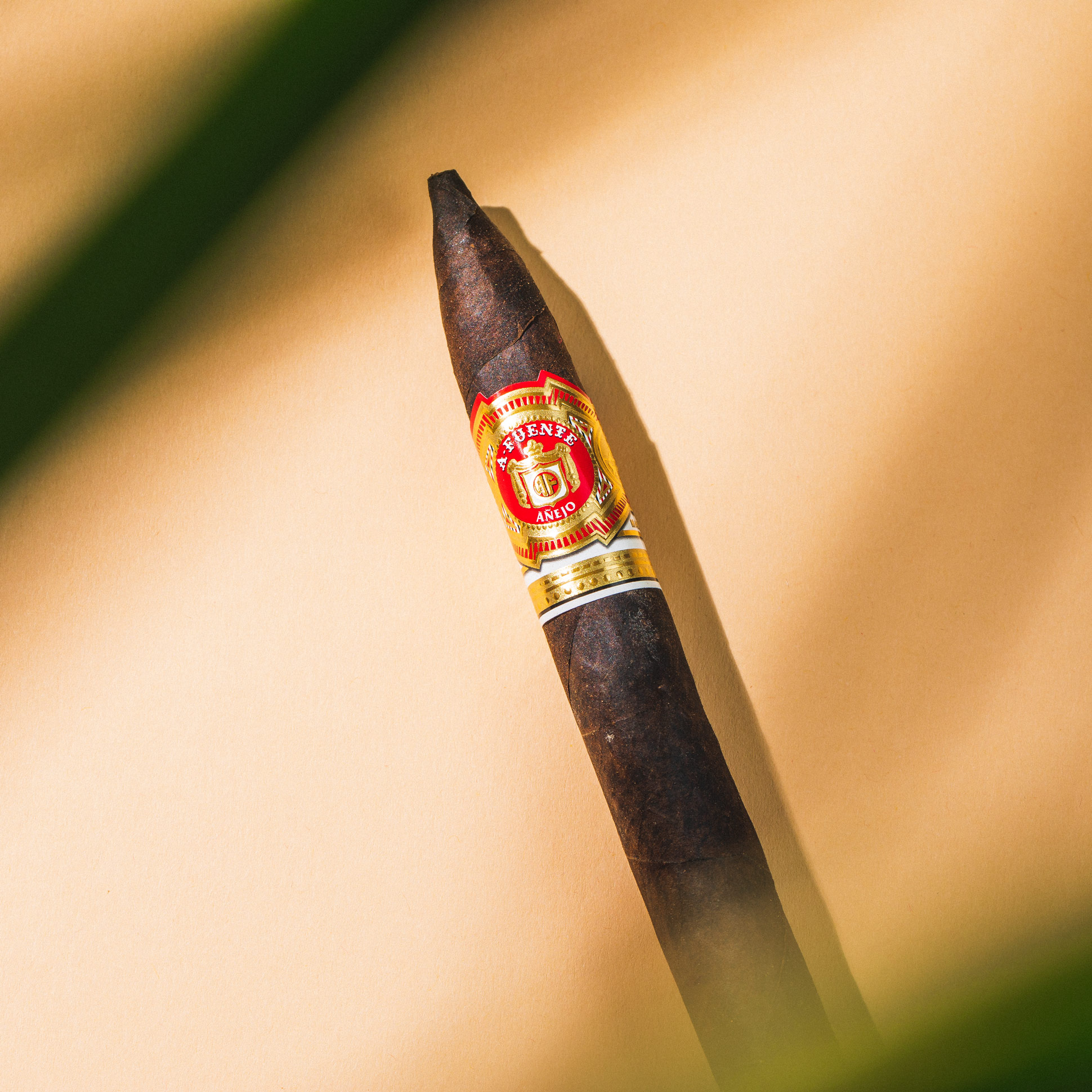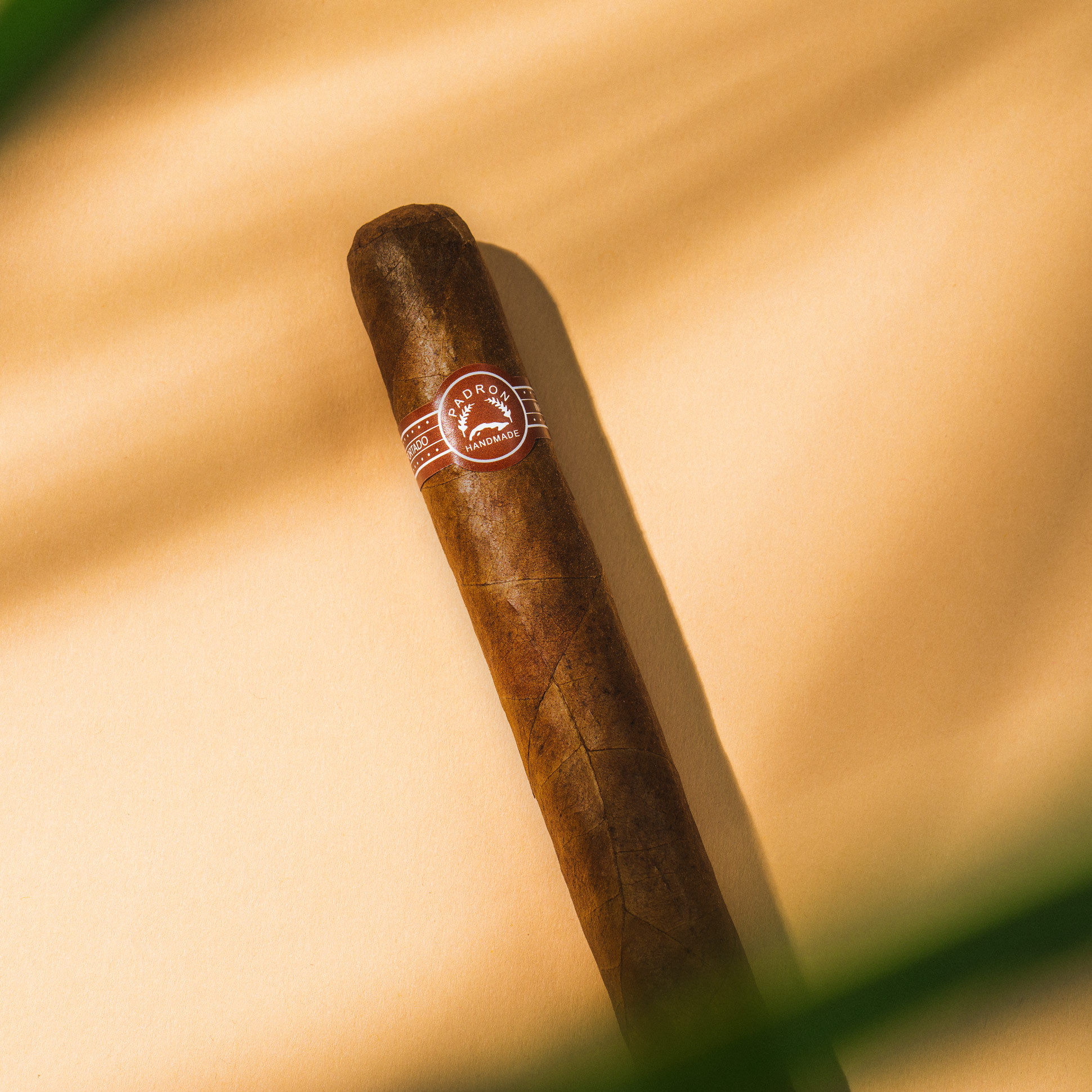To novices, smoking a cigar can be more intimidating than fun. This definitive guide to the best cigars of 2018 covers everything you need to know before you buy your next cigar, including basic etiquette, know-how and a breakdown of best cigars across different price points and flavor profiles.
Prefer to skip directly to the picks? Click here.
The Short List
Best Cigar for Beginners: Nat Sherman Sterling Series
An approachable, balanced, and affordable cigar with fantastic construction. A prime example of the pleasant nuance of a Connecticut wrapper.
Tasting Notes: Connecticut wrappers impart a creamy, buttery flavor, with notes of cocoa, wood, and toasted bread. This cigar in particular is the perfect pairing with a cup of coffee.
Filler: Dominican
Binder: Dominican
Wrapper: Ecuadorian-grown Connecticut
Price: $132+, box of 10
Best Cigar for the Money: Davidoff White Label Short Perfecto
The quality of the tobacco here is extremely high, and it’s a benchmark of construction. It’s smaller than other Davidoff cigars, meaning it won’t won’t break the bank, and it is an excellent example of a mild-bodied cigar that’s still rich and complex.
Tasting Notes: Starts with hay and buttery smoke, transitioning into earthiness and even a touch of pepper spice in its final third.
Filler: Dominican Republic
Binder: Dominican Republic
Wrapper: Ecuadorian-grown Connecticut
Price: $18+
Best Cigar for Special Occasions: Illusione Epernay
This box-pressed cigar was designed to cater to the European profile — it’s milder than many Americans prefer — and it was named for the famous Champagne region. Just like a bottle of bubbly, it might be best saved for special celebratory moments.
Tasting Notes: Distinct floral notes give way to honey, coffee and cedar.
Binder: Nicaragua
Filler: Nicaragua
Wrapper: Corojo, Nicaragua
Price: $230+, box of 25
Everything you ever wanted to know about America’s favorite brown spirit, including, of course, the best bottles you can actually buy. Read the Story
Introduction
T
o novices, smoking a cigar — hell, just venturing into a local cigar store to buy one — can feel more daunting than fun. The mechanics of properly smoking one (how to draw without inhaling?) don’t come naturally. Faux pas (when to ash the thing?) abound. And then there’s the basic question of which cigar, in a room stuffed with boxes of the things, to buy.
You’re not imagining it: cigar smoking is full of tradition, ritual and enigma. The good news, says Pierre Rogers, is that cigar smokers form a natural, welcoming community — acolytes not just to the rolled leaf, but to lighting them up together.
Cigar smoking is full of tradition, ritual and enigma. The good news is that cigar smokers form a natural, welcoming community.
Community is Rogers’s purview. He’s the founder of PuroTrader, the world’s largest peer-to-peer cigar trading platform, hosted in an online service that also includes community-created cigar ratings, forums and blog posts. Rogers created the service as a searchable e-humidor for collectors after discovering that someone had stolen a single cigar out of a prized box he’d been saving for over a decade. “Initially, we set out to create a way for every collector for free to build an online humidor — a way to catalog their own collection, take notes on each cigar, and then make it searchable. You could log on and look at anybody’s humidor, anywhere in the world. The inevitable conclusion to that was, ‘You got something I want — how do we make that happen?’” he says.
The service’s soul rests upon this shared community. “It’s the best community in the world,” Rogers says. “No offense to wine guys or Scotch guys. But to my knowledge, cigar guys are the only guys in the world that do cigar bombs” — when a random stranger sends the greatest cigars they can get ahold of, with the expectation only of “paying it forward” to the next unwitting smoker. “If anybody’s ever been out smoking cigars, there’s a good chance they’ve met some random stranger, and there’s a good chance that person has just straight up given them a random cigar. It’s happened to me a ton of times. You don’t saunter up to the bar and someone hands you a Macallan 21. But with cigars, it happens commonly.”
So while curious amateurs can certainly learn the hobby on their own, there’s a great chance their local cigar shop is full of resident smokers willing to help out — and, barring that, they can be found online with a few strokes of the keyboard. It won’t take long to immerse themselves in all of the other great things about cigar smoking: the craftsmanship of the cigar itself, more authentic conversation, and even what Rogers calls the “forced meditation” that comes with taking the time to sit down and take some deep, slow draws of fragrant smoke.
Still, a baseline of knowledge will help you focus on those pleasures and making new friends, rather than discerning the difference between a V cut and a straight cut. So I asked Rogers to give me a rundown of cigar etiquette and basic knowledge, along with the cigars he loves most, across a range of prices and through the common categories of mild-, medium-, and full-bodied. Consider them a good starting place to figure out what you like and don’t like.
Cigar Terms to Know
Wrapper: The single leaf that literally wraps the outside of the cigar. It imparts around 60 percent of the cigar’s final flavors. Its flavors have to do with its country of origin, the way it’s grown (in the sun or shaded), and the type of tobacco plant. Different examples include Connecticut, maduro, claro and oscuro.
Filler: The innermost leaves rolled within a cigar, almost always a blend of different types of leaves.
Binder: The tobacco that helps hold a cigar together. It must be the strongest leaf in a cigar, but also imparts flavor.
Ring Gauge: The diameter of a cigar, measured by sixty-fourths of an inch. The bigger the ring gauge, the bigger the diameter.
Head/Cap: The end of a cigar that is cut and put in your mouth. Make sure not to cut off the entire cap, which will unravel the wrapper.
Foot: The end of a cigar that is lit. Smell this end before lighting to get a whiff of all the tobacco inside.
Strength and Body: Are not the same. The strength of a cigar has to do with how powerfully its nicotine affects the smoker; the body has to do with the impact of the cigar’s flavors in the mouth, its mouthfeel, and its overall richness.
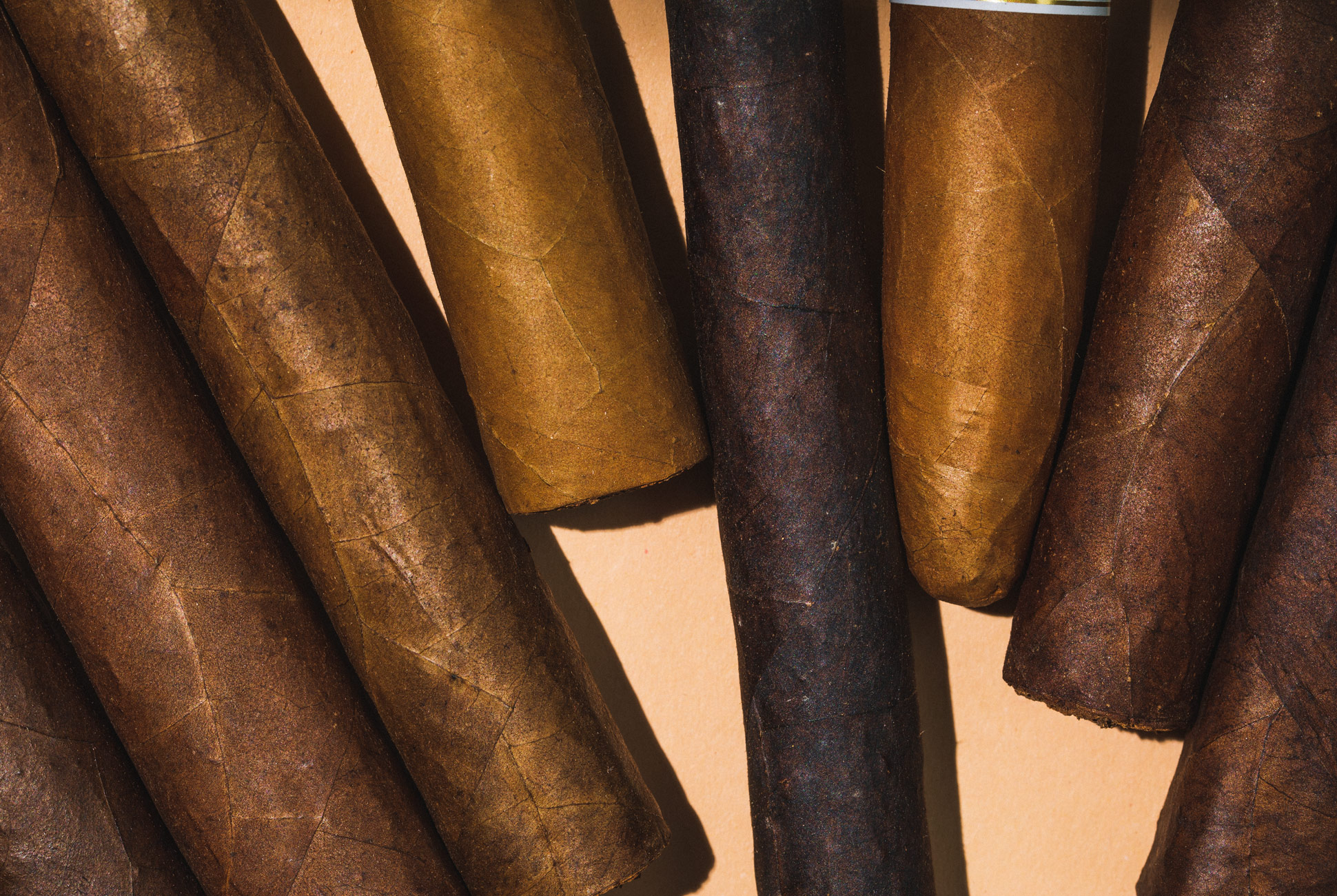
A cigar’s wrapper imparts around 60 percent of the cigar’s final flavors. Its flavors have to do with its country of origin, the way it’s grown (in the sun or shaded), and the type of tobacco plant.
How to Smoke a Cigar
Step 1: Cut the cigar.
“Before you light it, you’ve got to cut it. The trick with a cut is when you look at any cigar, any shape, you can see where the roller has rolled an extra cap line between the wrapper of the cigar and head of cigar. When you cut, you want to cut just above that line. You’re only removing the cap. You’re not cutting into the wrapper. If you cut into the wrapper, i.e. you cut a little too much off of the top, it will start to unravel and fall apart in your mouth. There are several different kinds of cuts: A straight cut is the classic way to do it.”
Step 2. Toast the foot.
“[Use] a match or a butane lighter. You want to use the heat, not the flame. You want the cigar to be a quarter inch to an inch above the flame, and you want to toast the foot of that cigar. Rotate the cigar and toast. You should be literally toasting it. Browning just the edges, just barely. Don’t get any char or flame on the wrapper.
Step 3: Draw and rotate.
“Once it’s evenly toasted, still using just the heat, draw and rotate. That should only take a moment to light it if you’ve properly toasted it, since the cigar is primed to make that happen. The different types of tobacco in there are meant to be smoked in a linear fashion; you don’t want a third of the bottom to be lit, because then you’re only tasting that one piece, and destroying the profile. Another obvious but overlooked tip: when using a match to light, let the head burn off, and only use the stick of wood to light the cigar. Allow the sulfur head to dissipate, because you don’t want to pull any of that into the cigar.”
Step 4: Keep the cherry cool.
“One of my tips about maximizing the enjoyment of any cigar, cheap or expensive, new or old, is to keep the cherry cooler. You do that by taking long, slow, easy draws on the cigar. Don’t take short pulls where you heat up that cherry. That’s a way to create acidity, acridness, and a burnt carbon taste.
Step 5: Taste the cigar.
“Allow the smoke to come into your palate from the tip of your tongue, front to back and side to side. You don’t want to push all that smoke out too rapidly. Just gently exhale the smoke. Obviously with cigars you’re not inhaling. It’s just for the flavor. So think about how that flavor hits your tongue. Start with the basic ones. Is it salty? Sweet? Bitter? Sour? Those are basics. We tend to all agree on those things.
Step 6: Ash the Cigar
“The best way to do it is a light touch on the bottom of an ash tray, and roll the cigar to let the ash fall off. The real reason you do it is to control the temperature of the cherry, the lit part. You want to keep it well lit but cool. There’s a perfect ratio. If you don’t smoke your cigar fast enough, because there are no additives in a cigar, it’ll go out. The cherry gets too cool. However if you start puffing away on it, and the cherry becomes really bright, it becomes bitter and acrid, and you don’t want that. So there’s this balance that you’re always trying to strike between keeping your cherry fully lit but as cool as possible.”
We spoke with experts and consulted our liquor cabinets to find 10 of the best mid-range ($50-$100) Scotches — and to help you navigate the sea of single malt whiskies. Read the Story
Best Mild Cigars
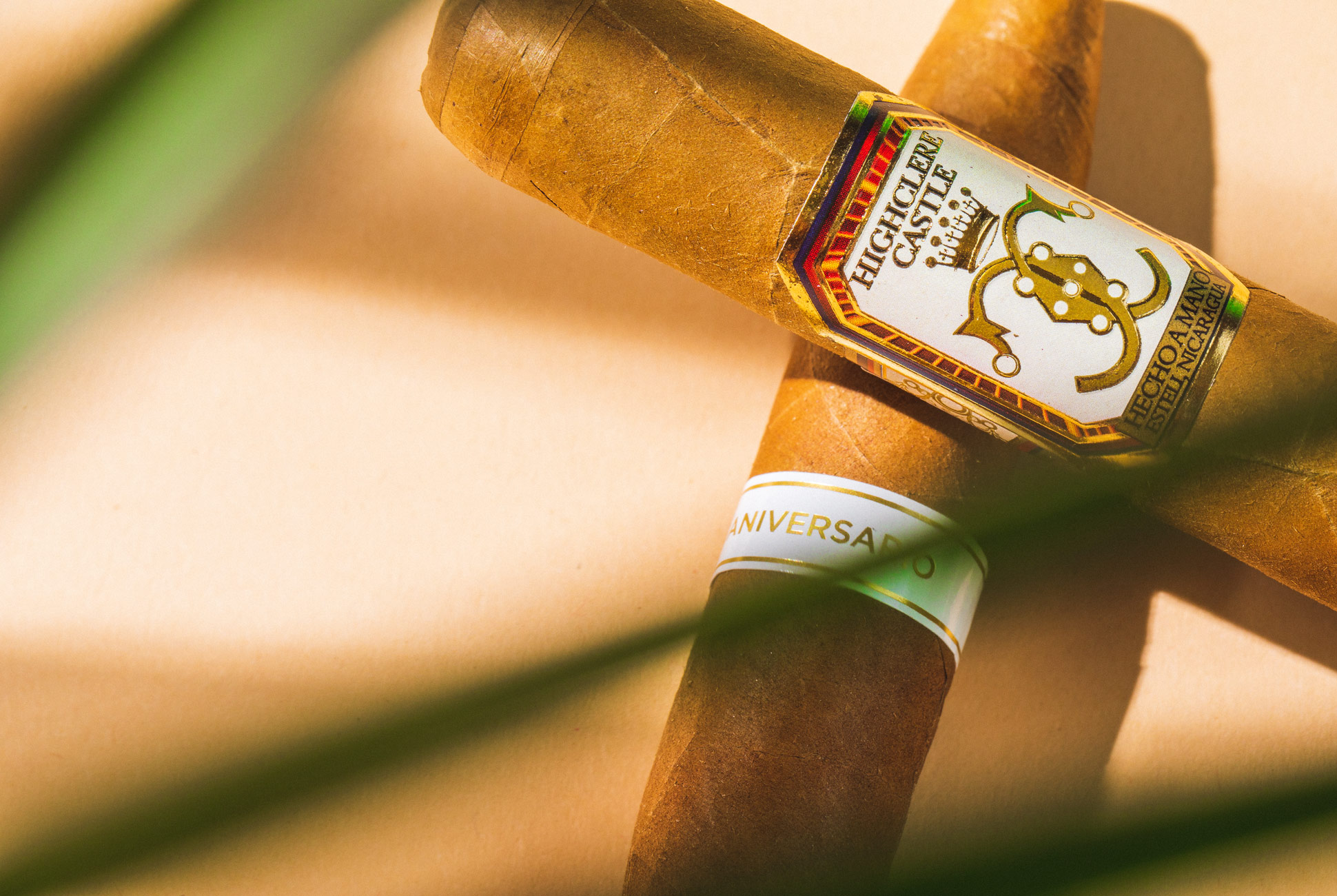
“A mild cigar is similar to a great cup of coffee with a touch of half and half in it,” Rogers says. “It’s warm and rich, but it’s also soft and very approachable.” According to him, the best examples come from the Dominican Republic; they also tend to have a Connecticut wrapper, which is golden and light in color. “The flavor tends to be very subtle and soft,” Rogers says. “No sharp edges, no bitterness. Something that on a fresh palate with nothing in your stomach you can really enjoy, and it won’t disrupt your day. That’s what a great mild cigar is to me.”
Nat Sherman Sterling Series
Most Approachable Mild Cigar: An approachable, balanced, and affordable cigar with fantastic construction. “They do a great job with all the finesse that goes into it — the branding, packaging, and the nuance of the cigar itself — and at a very reasonable price point,” Rogers says. It’s a prime example of the pleasant nuance of a Connecticut wrapper.
Tasting Notes: Connecticut wrappers impart a creamy, buttery flavor, with notes of cocoa, wood, and toasted bread. This cigar in particular is the perfect pairing with a cup of coffee.
Filler: Dominican
Binder: Dominican
Wrapper: Ecuadorian-grown Connecticut
Price: $132+, box of 10
Davidoff White Label Short Perfecto
Best Short Smoke: “Davidoff is the Mercedes-Benz of cigars,” Rogers says. That means high quality — at a high price. The quality of the tobacco inside is extremely high, and it’s a benchmark of construction. But this smaller cigar won’t break the bank, and it is an excellent example of a mild-bodied cigar that’s still rich and complex.
Tasting Notes: It starts with hay and buttery smoke, transitioning into earthiness and even a touch of pepper spice in its final third.
Filler: Dominican Republic
Binder: Dominican Republic
Wrapper: Ecuadorian-grown Connecticut
Price: $18+
Foundation Highclere Castle
Best Mild Yet Complex Blend: Nicholas Melillo, the founder of Foundation Cigar Company, hails from “the great state of Connecticut.” That means he has a great appreciation for the light-colored wrapper that bears the Connecticut name, and the creamy smoke it produces. The Highclere Castle uses Nicaraguan filler and Brazilian binder to add complexity to the mild flavors.
Tasting Notes: Creamy, with pepper, citrus, and leather.
Filler: Nicaragua
Binder: Brazil
Wrapper: Ecuadorian-grown Connecticut
Price: $216+, box of 20
Best Medium Cigars
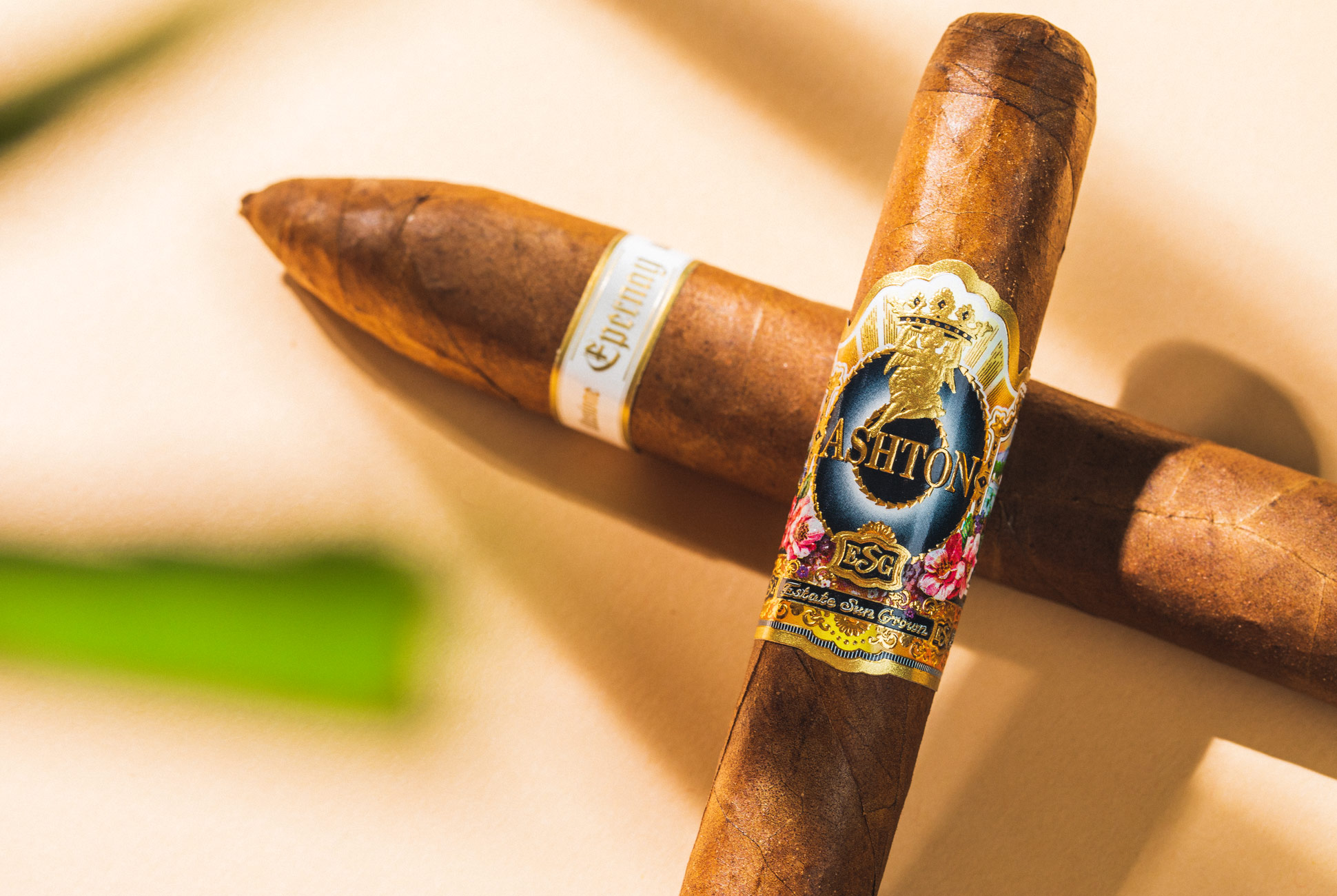
An increase in the body of the cigar has a lot to do with with how its smoke feels in your mouth. “Is there an oiliness there? A richness?” Rogers asks. “Wine people call it mouthfeel, and it’s no different with cigars.” Medium cigars are what most people end up smoking — they’re a great middle ground. “It provides enough strength that can be paired nicely with everything from a coffee to a bourbon. Flavors tend to be richer, the mouthfeel warmer and oilier. The smoke tends to be denser and richer,” Rogers says.
Illusione Epernay
Best Box-Pressed Cigar: “This is a fantastic box pressed cigar,” Rogers says, indicating its squared-off shape from quite literally being pressed into a box. It was designed to cater to the favored European profile — milder than Americans prefer — and named for the famous Champagne region. And just like a bottle of bubbly, it might be best saved for special celebratory moments.
Tasting Notes: Distinct floral notes give way to honey, coffee and cedar.
Binder: Nicaragua
Filler: Nicaragua
Wrapper: Corojo, Nicaragua
Price: $230+, box of 25
Tatuaje Tattoo Series
Best Spicy Cigar: Founder Pete Johnson and master blender Don ‘Pepin’ Garcia are well respected for making cigars that consistently receive high scores from reviewers. The secret may be “Cuban-esque” flavors, stemming from Cuban-seed Nicaraguan-grown tobacco.
Tasting Notes: More spice and pepper than other medium-bodied cigars, though it also features cocoa, sweet cream and cedar notes.
Binder: Nicaragua
Filler: Nicaragua
Wrapper: Habano, Ecuador
Price: $146+, box of 50
Camacho BG Meyer Gigantes
Best Big Stick: Part of a bolder series of cigars made by Camacho, the Gigantes is a play on the 6-inch by 54-inch cigar format, with a large ring gauge. But bigger cigars aren’t necessarily more intense: a larger size means more airflow and less density of the tobacco.
Tasting Notes: Grassy and earthy, with subtle spice, mocha, woodiness, and a berry sweetness.
Binder: Brazil
Filler: Nicaragua, Dominican Republic
Wrapper: Habano,
Price: $33+, pack of five
Padron 1926 Series
Best Mellow Smoke: Padron is a beloved cigar-making institution, founded by Jose Orlando Padron, a Cuban refugee living in Miami, in 1964. The 1926 series is their most limited, and the natural wrapper version (as opposed to the darker, pungent maduro) is a mellow, smooth smoke.
Tasting Notes: Caramel sweetness, a cedar-y tang, and notes of black and cayenne pepper.
Binder: Nicaragua
Filler: Nicaragua
Wrapper: Natural, Nicaragua
Price: $56+, pack of four
Ashton ESG
Most Balanced Smoke: While Ashton is generally thought of as an entry-level cigar, the ESG (Estate Sun Grown) jacks up the price tag. “Because of that high cost, it doesn’t get fair press,” Rogers says. Its sun-grown wrapper (as opposed to the more common shade-grown) creates a more oily, pungent leaf.
Tasting Notes: Oily nuts, leather, earth and cedar, with a light, creamy smoke.
Binder: Dominican Republic
Filler: Dominican Republic
Wrapper: Sun-grown, Dominican Republic
Price: $20+
Best Full-Bodied Cigars

Full-bodied cigars can go in a few different directions, particularly, becoming spicy. “You can have a few different kinds of spice,” Rogers says. “A white pepper, black pepper, or even a cayenne pepper.” Those larger flavors can hold their own against a steak dinner or a peaty Scotch. “But the key here remains balance. Strength is not flavor. When you smoke that cigar, you want the palate to be full of flavor. Rich, complex. That’s what makes a great full cigar — not the strength,” Rogers says.
Arturo Fuente Anejo
Best Cognac Barrel-Aged Cigar: In 1998, the OpusX’s downfall was to cigar smokers’ benefit: After Hurricane Georges created a shortage of wrapper tobacco, the brand switched to Connecticut broadleaf maduro wrapper aged in Cognac barrels, and the Anejo was born. The OpusX returned, of course, but the Anejo stuck around, treasured for the sweetness that wrapper layered atop the spicy, robust binder and filler.
Tasting Notes: Cognac, oily sweetness, butter and nuts.
Binder: Dominican Republic
Filler: Dominican Republic
Wrapper: Connecticut Broadleaf aged in Cognac barrels, America
Price: $10+
Padron Series 3000 Maduro
Best Maduro Cigar: Padron grows its own maduro wrappers rather than sourcing them, then wraps them around long-aged Nicaraguan binder and filler. The result is one of the most balanced full-bodied cigars around.
Tasting Notes: A “barnyard” earthiness that gives way to cocoa sweetness and oily nuttiness.
Binder: Nicaragua
Filler: Nicaragua
Wrapper: Nicaragua
Price: $7+
Ashton VSG
Best Affordable Full-Bodied Cigar: This is Rogers’s pick for an affordable, full-bodied cigar, with plenty of flavor and solid construction despite Ashton’s entry-level price. Its bold flavors are thanks in part to a sun-grown Ecuadorian wrapper that’s oily and rich.
Tasting Notes: Cedar, espresso, and dark chocolate.
Binder: Dominican Republic
Filler: Dominican Republic
Wrapper: Sun-grown, Ecuador
Price: $12+
Fuente Fuente OpusX
Best Collector’s Cigar: When it was released in 1995, the OpusX proved that Dominican-grown, Cuban-seed tobacco could be the best in the industry. Ever since its release, it’s been considered one of the best full-bodied cigars on the market, and is a collector’s favorite.
Tasting Notes: Cayenne pepper and leather.
Binder: Dominican Republic
Filler: Dominican Republic
Wrapper: Dominican Republic
Price: $13+
This definitive guide explores everything you need to know about the world’s most popular agave spirit, including a list of the best bottles and brands to seek out. Read the Story

